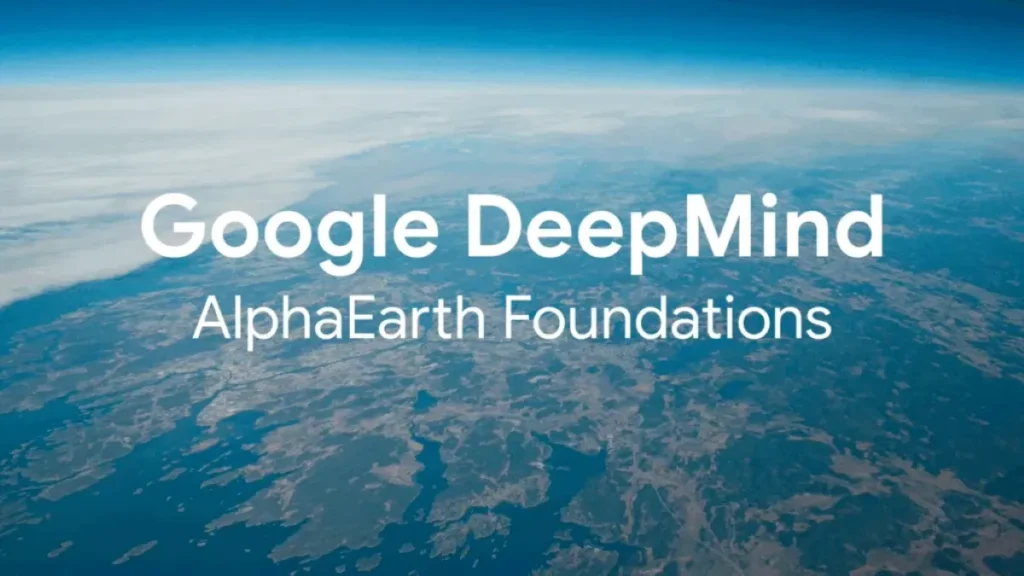Google’s AlphaEarth AI model is revolutionizing global environmental mapping, acting like a virtual satellite to deliver high-resolution Earth maps, real-time environmental monitoring, and climate change tracking for research and sustainable development.

Google has just unveiled AlphaEarth Foundations, a next-gen AI model that works like a virtual satellite, offering unparalleled insight into Earth’s surface—from climate patterns to land-use changes. This geospatial innovation taps into satellite imagery, 3D terrain data, radar scans, and climate simulation, compressing it into actionable, hyper-efficient “embeddings” with as little as 10×10-meter precision.
Table of Contents
What Makes AlphaEarth So Unique?
The secret behind AlphaEarth is its ability to convert colossal amounts of remote-sensing input into compact, standardized data formats—cutting storage needs by up to 16× without sacrificing detail. Designed as a geospatial foundation model, it’s accessible via Google Earth Engine’s Satellite Embedding dataset (2017–2024), enabling scientists, urban planners, conservationists, and private-sector innovators to work more smartly and sustainably.
Key Benefits of the Virtual Satellite AI Model
- Real-time Environmental Monitoring
AlphaEarth brings together massive datasets to deliver near real-time maps of deforestation, agriculture, urban expansion, and ecosystem changes—perfect for rapid response to environmental threats. - Data Compression and Accessibility
Storing data as 10×10 m embeddings makes large-scale analysis feasible for governments, NGOs, and small enterprises—no more drowning in raw satellite footage. - Reduced Error, Increased Accuracy
Early benchmarks show AlphaEarth delivers up to 24 % lower error rates on land-cover classification versus older AI systems, even when trained with limited labeled data. - Versatile Use Cases Across Sectors
Organizations like MapBiomas, the UN FAO, and the Global Ecosystems Atlas are already deploying AlphaEarth embeddings to map ecosystems, monitor deforestation, plan cities, and track agricultural dynamics.
Why This Innovation Matters for the U.S.
For U.S.-based policymakers, climate researchers, and urban developers, AlphaEarth represents a leap forward. Whether it’s tracking wildfire spreads in California, monitoring coastal erosion along the Atlantic seaboard, or optimizing infrastructure planning, this Earth-mapping AI model provides a high-resolution, actionable snapshot of evolving terrain—all with streamlined data handling. Combined with its accuracy edge, AlphaEarth can bridge the information gap in environmental strategy and emergency response.
How It Works: The Mechanics Behind the AI
At its core, AlphaEarth compiles data from satellites, radar, LiDAR, and environmental sensors, then compresses the information into multi-dimensional embeddings—each cell representing a 10×10-meter patch of Earth. These embeddings can be manipulated, compared, and visualized efficiently, thanks to advanced vector representation.
Unlike conventional mapping methods, there’s no need to preprocess gigantic image datasets or reconcile conflicting time-series data. Users simply tap into the ready-made dataset to start their analysis.
Broader Impacts: From Climate to Commerce
- Wildfire & Disaster Response: Precise environment tracking helps first responders act quickly where it matters most.
- Agriculture & Land Management: Farmers and policymakers can monitor crop cycles, soil erosion, and land-use changes in near real-time.
- Urban Planning & Infrastructure: Planners can model urban heat islands, monitor sprawl, and future-proof designs using consistent, global datasets.
- Environmental Research & Conservation: Scientists gain deeper insight into habitat fragmentation, biodiversity declines, and ecosystem resilience—monitoring critical changes with granularity.
What Makes It a Virtual Satellite?
While not a physical satellite, AlphaEarth functions like one—constantly aggregating and updating geospatial data to create a living, global map. This digital twin capability means users can get real-time insights into environmental changes without the delays of manual imagery processing or outdated aerial data.
Where to Explore AlphaEarth Foundations
To dive deeper into this innovative dataset, you can explore the Satellite Embedding dataset within Google Earth Engine (opens in new tab), featuring Earth data from 2017 to 2024. This tool gives researchers and decision-makers the power to conduct detailed, efficient mapping with fewer barriers to access.
Bold Keyword Variations for SEO
To strengthen search relevance, here are the key phrases highlighted throughout:
- AlphaEarth Foundations, virtual satellite AI model, Earth-mapping AI model, geospatial foundation model, AI environmental mapping tool, Earth embedding dataset, AI map of the planet, compressed satellite dataset, Google Earth mapping AI, geospatial AI innovation, Earth observation AI, AlphaEarth geospatial model
Key Takeaways: Why It Matters
| Benefit | Details |
|---|---|
| Efficiency | Embeddings reduce storage needs while accelerating analysis. |
| Accuracy & Scale | 24 % fewer errors with consistent global coverage. |
| Accessibility | Usable by agencies, researchers, businesses—without complex prep work. |
| Real-life Impact | Powers wildfire tracking, urban planning, agricultural monitoring, etc. |
Final Thoughts
Google DeepMind’s AlphaEarth Foundations ushers in a new era of Earth-mapping AI, operating like a virtual satellite that renders high-resolution, near real-time geospatial embeddings accessible across industries. For U.S. stakeholders—from researchers to urban developers—AlphaEarth offers precision, scalability, and clarity in the fight against climate shifts.
Expect transformative applications across conservation, agriculture, disaster response, and smart infrastructure. The Earth has never been this connected—or clearer—thanks to this ambitious AI leap.
AlphaEarth AI, Google AlphaEarth AI model, AlphaEarth virtual satellite, AlphaEarth Earth mapping, Google DeepMind AlphaEarth, global environmental mapping AI, AI-powered Earth observation, high-resolution environmental maps, AI climate monitoring, AlphaEarth geospatial analysis, AI-driven planetary mapping, Google AI for sustainability, AlphaEarth climate change tracking, Earth mapping AI technology, virtual satellite for Earth data, AI environmental monitoring, AlphaEarth for disaster management, AI mapping for research, AI planetary mapping system, Google AI Earth model
Thank You for visiting Tech Uplifter!
Don’t forget to Subscribe to our Official Newsletter for latest updates.